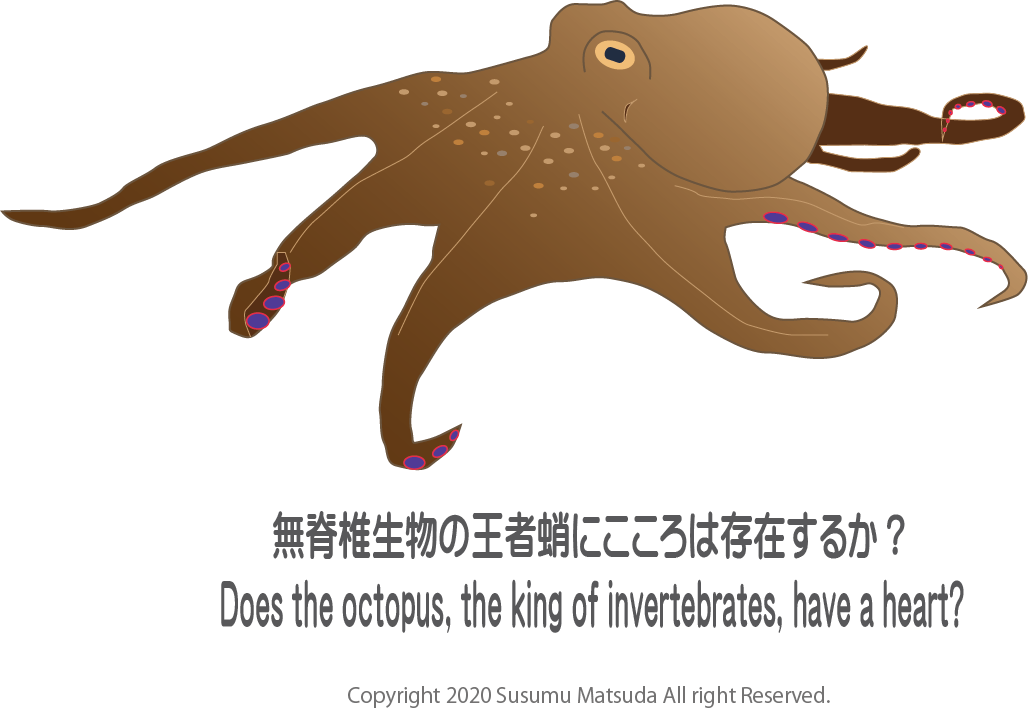This time, I will focus on the octopus. Octopus is a mollusk classified in the order Cephalopod-Octopodiformes Octopus. A typical mollusk ancestor is the nautilus, also known as a living fossil. We humans are mammals, and if we think in a big way, they are vertebrates and their ancestors are fish. The divergence of octopus and human ancestors is a long time ago, and each has undergone its own evolution and is now in its current form. I focused on octopus because it has something in common between humans and octopus, even though it has continued to evolve independently in such different evolutions.

The octopus’s eye has an eye called the camera eye. It has the same eye form as us humans. Unlike the compound eye known for insects, the camera eye has a lens, collects light through the lens, irradiates the retina on the inner surface of the sphere with light, reads the image with a sensor, and identifies it with the brain. This method is the same as the mechanism of the human eye, and enables extremely advanced image processing.
There are many differences between humans and octopuses. There are multiple octopus brains and one person (strictly speaking, the structure connects the left brain, right brain, and center). There are multiple octopuses and one person in the number of hearts. Blood is blue for octopus, red for humans, and the appearance is completely different. Octopus can change its shape freely, and skin can be discolored by camouflage.
The octopus has such a difference, but the point to pay attention to this time is the legs. The octopus is thought to have eight legs, but strictly speaking, it seems that several are legs and the rest are hands. Of note is the ability of the tentacles, which are the limbs. Neurons are concentrated in the tentacles and have brain functions. Also, the tentacle’s skin has a very good sensation, with multiple tactile, taste and visual functions. In addition, the octopus can be caught with a suction cup, wrapped with tentacles, and held, but the taste can be confirmed when the tentacles touch it. Isn’t it amazing that you can tell the taste when you touch it? .. Each tentacle has a brain. It seems that the general view is that it is necessary to control many suckers at the same time and to control a long stretched tentacle. In any case, you can check the taste by touching the tentacle alone and take action at your own discretion. Of particular interest to me is the cutaneous sensory function of the octopus tentacles. Skin sensory function If the mechanism is elucidated, we believe that it will be possible to detect dangers early, notice them early, and detect disasters at an early stage.
No tags for this post.